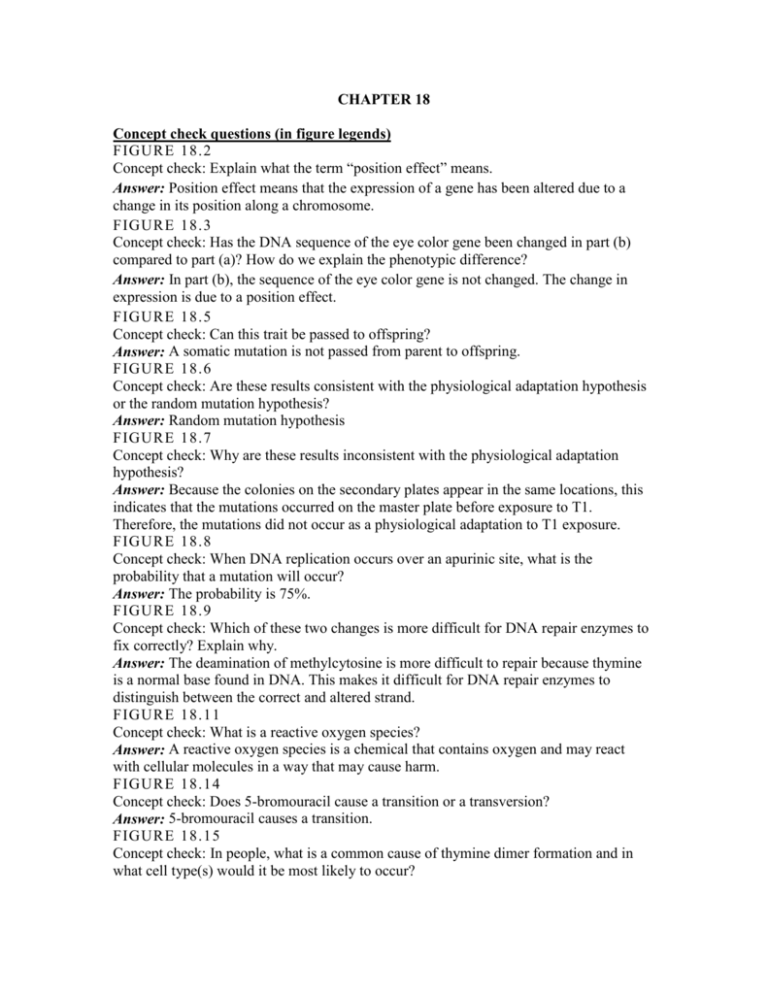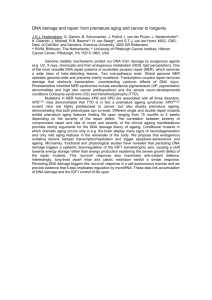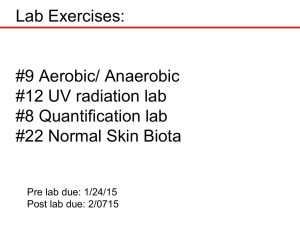CHAPTER 18
advertisement

CHAPTER 18 Concept check questions (in figure legends) FIGURE 18.2 Concept check: Explain what the term “position effect” means. Answer: Position effect means that the expression of a gene has been altered due to a change in its position along a chromosome. FIGURE 18.3 Concept check: Has the DNA sequence of the eye color gene been changed in part (b) compared to part (a)? How do we explain the phenotypic difference? Answer: In part (b), the sequence of the eye color gene is not changed. The change in expression is due to a position effect. FIGURE 18.5 Concept check: Can this trait be passed to offspring? Answer: A somatic mutation is not passed from parent to offspring. FIGURE 18.6 Concept check: Are these results consistent with the physiological adaptation hypothesis or the random mutation hypothesis? Answer: Random mutation hypothesis FIGURE 18.7 Concept check: Why are these results inconsistent with the physiological adaptation hypothesis? Answer: Because the colonies on the secondary plates appear in the same locations, this indicates that the mutations occurred on the master plate before exposure to T1. Therefore, the mutations did not occur as a physiological adaptation to T1 exposure. FIGURE 18.8 Concept check: When DNA replication occurs over an apurinic site, what is the probability that a mutation will occur? Answer: The probability is 75%. FIGURE 18.9 Concept check: Which of these two changes is more difficult for DNA repair enzymes to fix correctly? Explain why. Answer: The deamination of methylcytosine is more difficult to repair because thymine is a normal base found in DNA. This makes it difficult for DNA repair enzymes to distinguish between the correct and altered strand. FIGURE 18.11 Concept check: What is a reactive oxygen species? Answer: A reactive oxygen species is a chemical that contains oxygen and may react with cellular molecules in a way that may cause harm. FIGURE 18.14 Concept check: Does 5-bromouracil cause a transition or a transversion? Answer: 5-bromouracil causes a transition. FIGURE 18.15 Concept check: In people, what is a common cause of thymine dimer formation and in what cell type(s) would it be most likely to occur? Answer: Thymine dimer formation is often the result of exposure to UV light. It most commonly occurs in skin cells. FIGURE 18.16 Concept check: What is the purpose of the rat liver extract in this procedure? Answer: Enzymes within the rat liver extract may convert nonmutagenic molecules into a mutagenic form. Adding the extract allows researchers to identify molecules that may be mutagenic in people. FIGURE 18.17 Concept check: Which of these repair systems is particularly valuable to plants? Answer: Photolyase is particularly valuable to plants, which are exposed to sun and susceptible to thymine dimer formation. FIGURE 18.19 Concept check: Explain why cuts are made on both sides of the DNA damage. Answer: Cuts are made on both sides of the DNA damage so the region can be removed by UvrD. FIGURE 18.20 Concept check: Which of these three proteins is responsible for ensuring that the mismatched base in the newly made daughter strand is the one that is removed? Answer: MutH distinguishes between the parental strand and the newly made daughter strand, which ensures that the daughter strand is repaired. FIGURE 18.23 Concept check: What is an advantage and disadvantage of this repair system? Answer: An advantage of this DNA repair system is that it can occur at any stage of the cell cycle. A disadvantage is that it may be imprecise and result in a short deletion in the DNA. FIGURE 18.24 Concept check: What are two advantages of specifically targeting a DNA repair system to actively transcribing genes? Answer: One advantage of specifically targeting a DNA repair system to actively transcribing genes is that it promotes the repair of DNA regions that are functionally important. Also, actively transcribed genes may be more susceptible to mutation.











